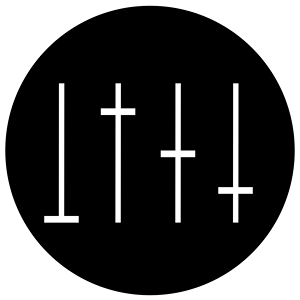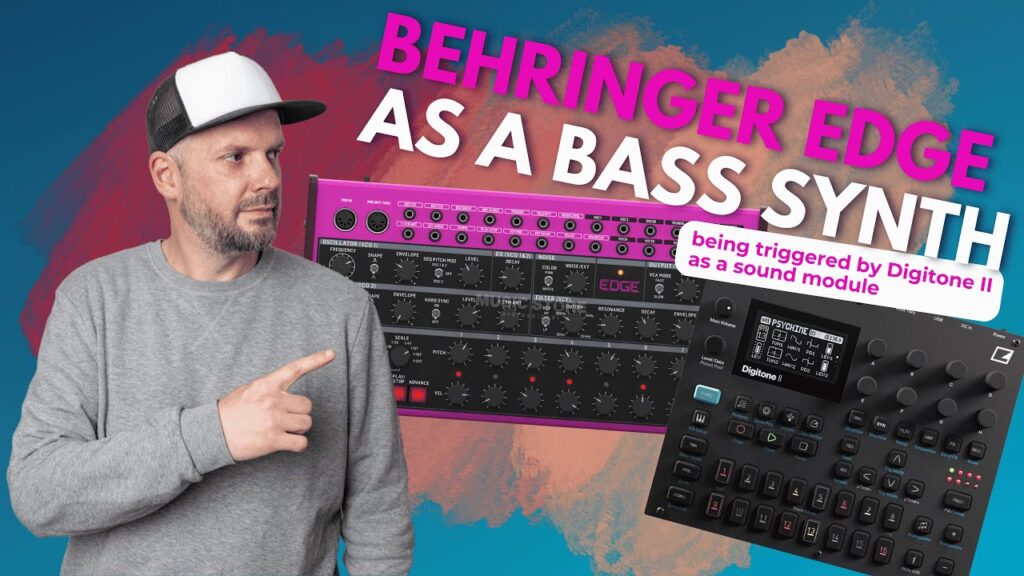Hi everyone,
Today I want to share a little sonic detour I took with the Behringer Edge—a semi-modular percussion synth that’s typically known for clanging, banging, and industrial bursts of noise. But what if we dialed things down a bit, flipped some switches, and turned it into a bass synth instead?
That’s exactly what I did. And along the way, I stumbled into a few surprises, a few mistakes, and a few pretty magical sounds.
First Things First: Triggering the Edge via MIDI
Let’s talk setup. I initially wanted to trigger the Edge via MIDI using my Digitakt. But—like any live setup—it’s a bit of a spaghetti mess of cables and routings I’d rather not dismantle. So I grabbed my Digitone instead, which also works beautifully.
- On the Digitone, I jumped to Track 16, loaded up a MIDI machine, and set it to MIDI Channel 1.
- On the Edge itself, make sure the DIP switches on the back are all flipped down—that puts you on MIDI Channel 1. There’s a helpful little chart on the case, which is nice if you don’t want to keep digging through the manual.
Once you hit a note on the Digitone, the Edge lights up. You’re in business.
A Quick Note About Pitch Control
Now here’s a weird thing that might trip you up (it did me):
If you don’t want the Edge’s internal pitch knobs to mess with your MIDI-triggered notes, you need to flip the sequencer pitch mode switch to the middle position (where it says “OFF”). This disconnects pitch modulation from the Edge’s built-in sequencer and lets your external MIDI gear take full control.
With that little quirk sorted, I had my MIDI notes flowing cleanly. Time to make some noise.
Dialing in That Low-End Growl
The Edge defaults to oscillator 1 on a square wave, with no envelope, no noise, no FM, and everything at zero. So at first, it just kinda drones. But that’s also a perfect blank slate for building your sound.
I added a quick kick on the Digitone just to use as a metronome, then started shaping the bass voice:
- Adjusted the decay to keep things tight.
- Enabled the envelope, which immediately made the sound punchier and more defined.
- Brought in oscillator 2 and—surprise!—realized hard sync was on. The result? Beautiful, gritty overtones I wasn’t expecting.
And here’s where it got interesting…
A Happy Sequencer Accident
At some point, I forgot to hit stop on the Edge’s built-in sequencer. I had been planning to use it purely as a sound module, controlled entirely by the Digitone. But the Edge had other ideas.
Suddenly, it started layering its own pitch modulation on top of my MIDI patterns—and it sounded great. It was one of those classic “didn’t-mean-to-do-that” moments that actually led to a unique vibe. So naturally, I leaned into it.
I started tweaking the sequencer pitch knobs again, adding a subtle melodic movement underneath the Digitone’s MIDI notes. The result felt alive—like the machine had a mind of its own, and it was in a really good mood.
Embracing the Chaos (and the Sequencer)
Originally, I wanted to treat the Edge like a traditional synth module—purely external control, predictable behavior, nice tidy signal chain.
But let’s be honest… where’s the fun in that?
The Edge’s internal sequencer isn’t just a utility—it’s a performance tool. Whether you’re making experimental techno, hypnotic grooves, or just noodling on a Thursday night, letting that sequencer do its thing can create unexpected rhythmic interactions and textures.
Even if you don’t “know what you’re doing,” flipping switches, nudging knobs, and just letting the machine surprise you can lead to very usable (and often very cool) results.
Final Thoughts: It’s Not Just a Percussion Synth
The Behringer Edge might be marketed as a percussion-focused synth, but I found it to be an excellent bass voice too—especially in a live or improvisational context. With or without the manual (I still haven’t opened it, and maybe I never will), the Edge rewards playfulness.
It’s got that rare quality where almost anything you do with it sounds good, or at least interesting. Whether you’re using it on stage or in the studio, it’s a perfect tool for the kind of chaotic creativity that leads to new ideas.
Do You Use the Edge in Your Setup?
I’d love to hear from you—especially if you’re using the Edge as a bass synth, not just for kicks and hats. Share your setups, live videos, or production tips in the comments. Let’s trade tricks and happy accidents.
If this kind of content speaks to your music-brain, don’t forget to like, subscribe, and ring that little bell icon so you don’t miss the next experiment. Thanks for being here and exploring sounds with me.
Until next time—stay curious and keep turning those knobs.

